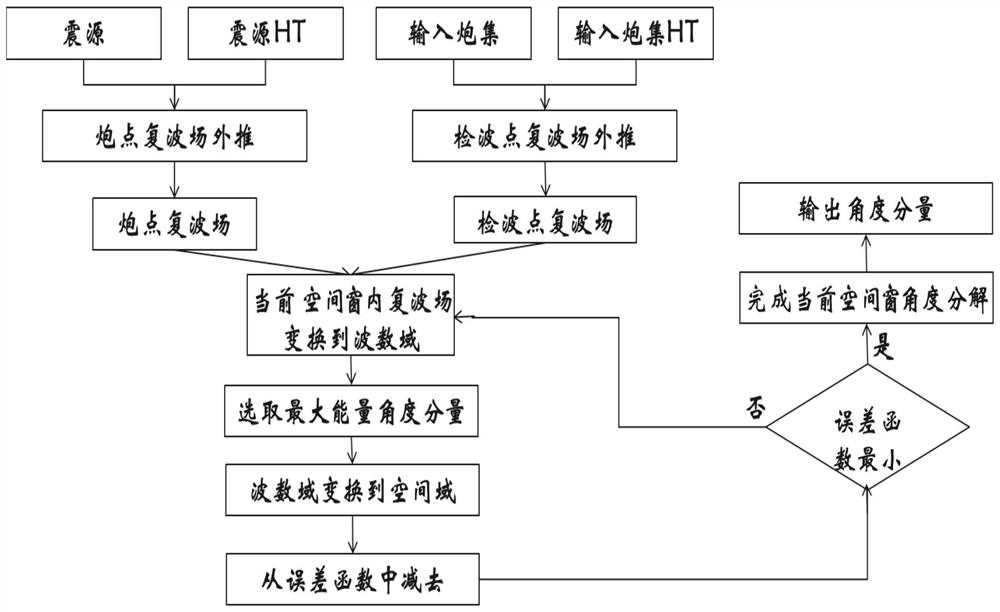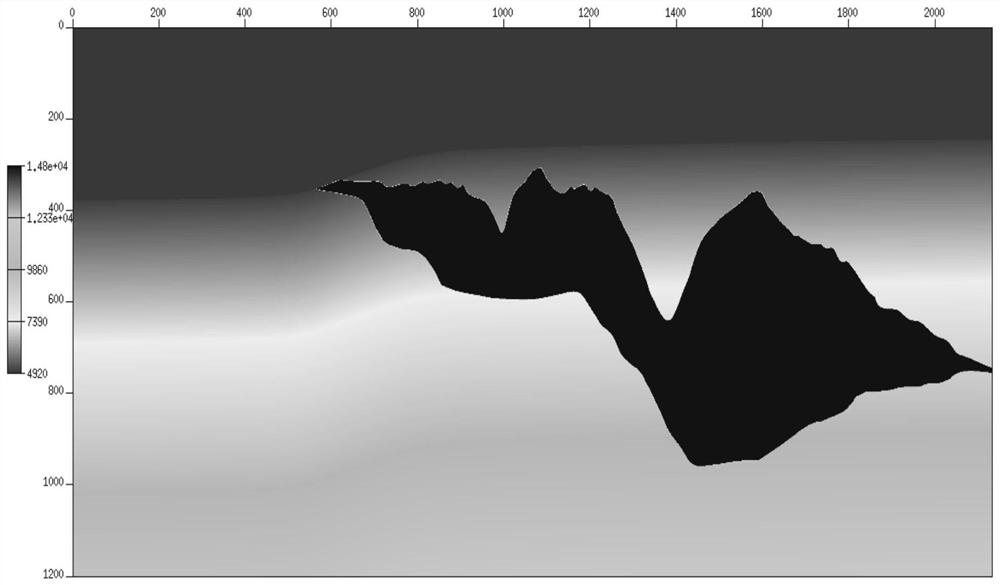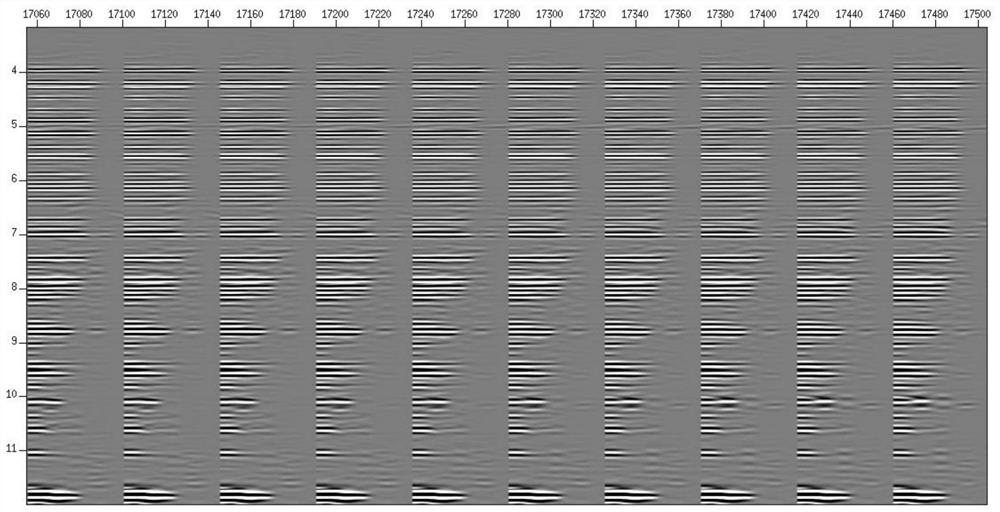Azimuth angle domain migration imaging method and system based on complex wave field
A technology of azimuth angle and migration imaging, which is applied in seismic signal processing and other directions, can solve the problems of event crossing and the inability to accurately predict the wave field propagation direction, etc., achieve good resolution of crossing events, and reduce the amount of calculation and storage Effect
- Summary
- Abstract
- Description
- Claims
- Application Information
AI Technical Summary
Problems solved by technology
Method used
Image
Examples
Embodiment 1
[0093] Such as figure 1 Shown, the inventive method comprises:
[0094] Step 1: Input the source, source HT, shot set, shot set HT, where the input source is a conventional wavelet source, the source HT is the Hilbert transform of the source wavelet, and the shot set HT is the Hilbert transform of the shot set.
[0095] Step 2: Perform extrapolation of the complex wave field of the shot point to obtain the complex wave field of the shot point, and at the same time perform extrapolation of the complex wave field of the detection point to obtain the complex wave field of the detection point (the recorded data of the detection point is the shot set), specifically, use the formula ( 1) The complex wave field of the shot point, using the formula (2) to obtain the complex wave field of the receiver point:
[0096]
[0097]
[0098] Among them, Us and Ur are the wave field at the gun end and the wave field at the receiver end respectively, v is the velocity, t is the time, fs ...
Embodiment 2
[0130] Such as Figure 12 As shown, the system includes:
[0131] The input unit 10 is used to input data: seismic source, seismic source HT, shot set, shot set HT;
[0132] The wave field continuation unit 20 is connected with the input unit 10, and is used for extrapolating the complex wave field of the shot point to obtain the complex wave field of the shot point, and at the same time performing the extrapolation of the complex wave field of the detection point to obtain the complex wave field of the detection point;
[0133] The angle component acquisition unit 30 is connected with the wave field extension unit 20, and is used to decompose the complex wave field of the shot point and the complex wave field of the receiver point into a plurality of identical spatial windows, and then obtain all angles of each spatial window weight;
[0134] The imaging unit 40 is connected with the angle component acquisition unit 30, and is configured to obtain an azimuth domain imaging ...
Embodiment 3
[0137] In order to verify the correctness and adaptability of the algorithm, the algorithm test was carried out on the two-dimensional Sigsbee2a theoretical model, figure 2 is the theoretical velocity model, image 3 with Figure 4 The local angle gathers are extracted for regions with simple structures and complex structures. The range of angle gathers is 0-60 degrees, and the interval is 2 degrees. The final stacked profile of all angle gathers is as follows Figure 5 As shown, the imaging quality of the obtained stacked migration section is comparable to the imaging result directly output by conventional RTM, and because the maximum angle is 60 degrees, the low-frequency imaging noise in the stacked imaging section is basically removed.
PUM
 Login to View More
Login to View More Abstract
Description
Claims
Application Information
 Login to View More
Login to View More - R&D
- Intellectual Property
- Life Sciences
- Materials
- Tech Scout
- Unparalleled Data Quality
- Higher Quality Content
- 60% Fewer Hallucinations
Browse by: Latest US Patents, China's latest patents, Technical Efficacy Thesaurus, Application Domain, Technology Topic, Popular Technical Reports.
© 2025 PatSnap. All rights reserved.Legal|Privacy policy|Modern Slavery Act Transparency Statement|Sitemap|About US| Contact US: help@patsnap.com



